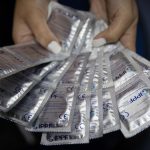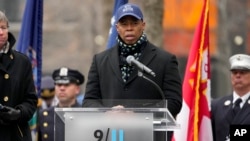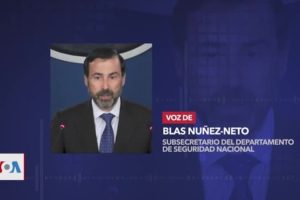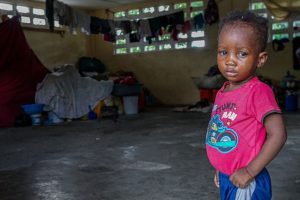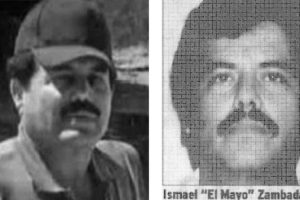Lolita Jackson was at her desk on the 72nd floor of the World Trade Center, feeling like she was working on top of the world. Then a bang was heard and it was possible to perceive smoke coming in through an elevator shaft.
Not sure what was happening, she joined thousands of other office workers on a harrowing trek up dark, smoky stairwells until she emerged at the scene of a terrorist attack.
It was not September 11, 2001. It was February 26, 1993, when a deadly attack killed six people, one of them pregnant, and injured more than 1,000, becoming a harbinger of the terrorism that still awaited the twin towers.
Jackson is hopeful that Sunday’s 30th anniversary will serve as a reminder that, even though decades have passed since the seismic acts of terrorism in America’s most populous city, no one, anywhere, can say that the threat of mass violent attacks has ended.
She knows this more personally than most: On September 11, she had to evacuate the South Tower of the WTC (World Trade Center) again.
“I am a living testimony that it can happen to one, and it can happen twice,” he said.
Relatives of the victims, survivors, dignitaries and others gathered at the World Trade Center for a ceremony that included the reading of the names of the six people killed in the 1993 bombing. Other events related to the anniversary include a mass held held on Sunday at a church near the WTC and a panel discussion on Monday at the 9/11 Memorial Museum.
A bell was rung and a minute’s silence was observed to commemorate the moment the attack occurred, at 12:18 p.m. Relatives of the victims and others placed roses next to their names, which are inscribed in one of the 9/11 memorial ponds.
Governor Kathy Hochul, Mayor Eric Adams and Senate Majority Leader Chuck Schumer were among the speakers honoring the lives lost and mourning the loss of innocence following the attack.
“Today, 30 years later, we are still feeling the impact of that event,” said Stanley Brezenoff, a survivor of the attack and who at the time was the director of the government agency that owned the WTC. “The pain we harbor for those we lost…we feel and share the grief that families have felt for all these years. That won’t change, even years down the line.”
Charlie Maikish, the executive in charge of the World Trade Center at the time, said the bombing was a “wake-up call” and that the security protocols put in place afterward — which included evacuation drills, emergency lights on ladders and new fire control panels — likely helped save thousands of lives in the 9/11 attacks.
The blast at noon, detonated in a rental van in an underground parking lot, revealed that Islamic extremists wanted to destroy the WTC’s Twin Towers. But the memory of the attack in the public memory was largely clouded after the events of September 11. Even the source that remembered the attack was crushed that day.
But to some survivors and relatives of the victims, the 1993 attack still seems like a warning that went unheeded, a loss that seems ignored and a lesson that still needs to be learned.
“The bombing of the World Trade Center in 1993 was the powder keg for the 9/11 attacks,” said Andrew Colabella, a cousin of John DiGiovanni, who was killed by the bomb. Colabella feels that the first attack is largely remembered as “a momentary irregularity,” rather than an alarm, in the history of international terrorism.
“These two historic events that have occurred should be instilled in our hearts and minds, to think together and to be united,” Colabella stated. Now a city councilman in Westport, Connecticut, he regularly attends the ground zero anniversary ceremonies for the 1993 bombing and the 2001 bombing, to honor the cousin he lost when Colabella was a little boy, but still remember.
DiGiovanni was at the WTC as a visiting vendor. The other victims worked at the complex. They were Robert Kirkpatrick, Stephen A. Knapp, William Macko, Wilfredo Mercado, and Monica Rodriguez Smith, who was going on maternity leave the next day.
The names of the six victims are inscribed in one of the 9/11 memorial ponds, and the museum has their photographs and a room dedicated to talking about the 1993 explosion.
“Each part of our work has seen the 1993 bombing as a part of the story we’re telling,” said Clifford Chanin, the museum’s director.
The explosive was planted by Muslim extremists who wanted to punish the United States for its Middle East policies, especially Washington’s support for Israel, according to federal prosecutors.
Six people were found guilty and jailed, including Ramzi Yousef, accused of being the ringleader of the group. A seventh suspect in the attack remains on the FBI’s most wanted list.
Yousef had hopes that the bomb would bring down the Twin Towers by causing one to collapse on top of the other, according to the FBI. The idea of razing those skyscrapers stuck: a message found on the laptop of another convicted conspirator warned that “next time it will be very precise, and the World Trade Center will continue to be one of our targets.”
Yousef’s uncle, Khalid Sheikh Mohammed, would later become the self-proclaimed mastermind behind the 9/11 attacks, when hijacked commercial planes were crashed into the buildings.
Although the towers withstood the 1993 bombing, they were left without power and without service from backup generators and the public address system. Tens of thousands of people descended the stairs; others were rescued from stopped elevators and damaged parking lots. Some workers kicked open windows to get fresh air, 120 kindergartners were stranded for a while on a lookout, and police helicopters rescued just over 20 people from rooftops.
The government agency that runs the WTC apologized to the relatives of the victims on the 25th anniversary, telling them the complex and the country were not prepared for the attack.
Following the attack, the World Trade Center banned the use of underground parking and installed security cameras and vehicle barriers. Battery-powered lights and reflective tape were attached to the stairs. Tenants stepped up fire drills and the complex issued workers identification cards, which they had to present upon entry.
On September 11, 2001, Jackson was back in his office, then on the 70th floor. When flames erupted in the adjoining tower, his company ordered an immediate evacuation.
Now he wonders if what he experienced twice seems “some kind of folklore” to people born after both attacks. She warns against complacency.
“You’re just at work pouring yourself a cup of coffee,” he noted, “and you might have to run for your life.”
Connect with the Voice of America! Subscribe to our channel Youtube and activate notifications, or follow us on social networks: Facebook, Twitter and instagram.




